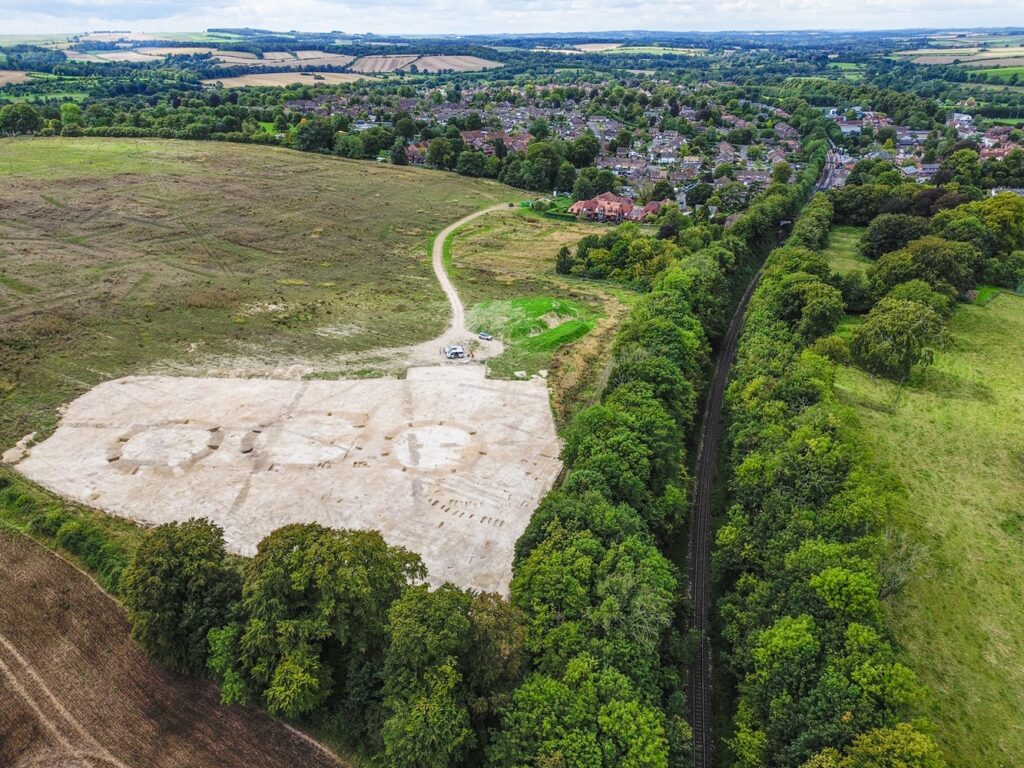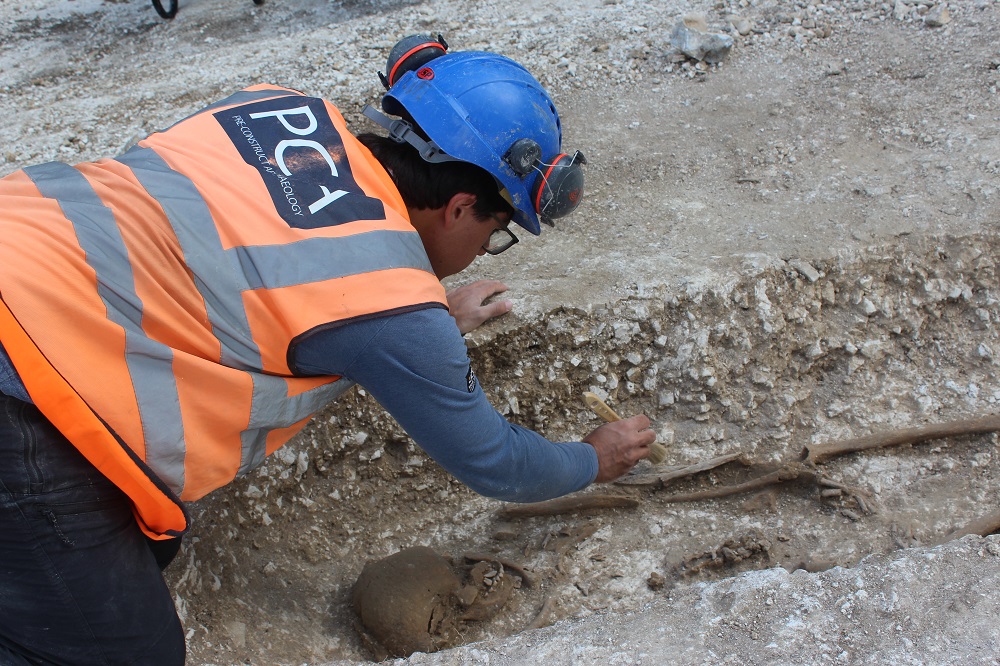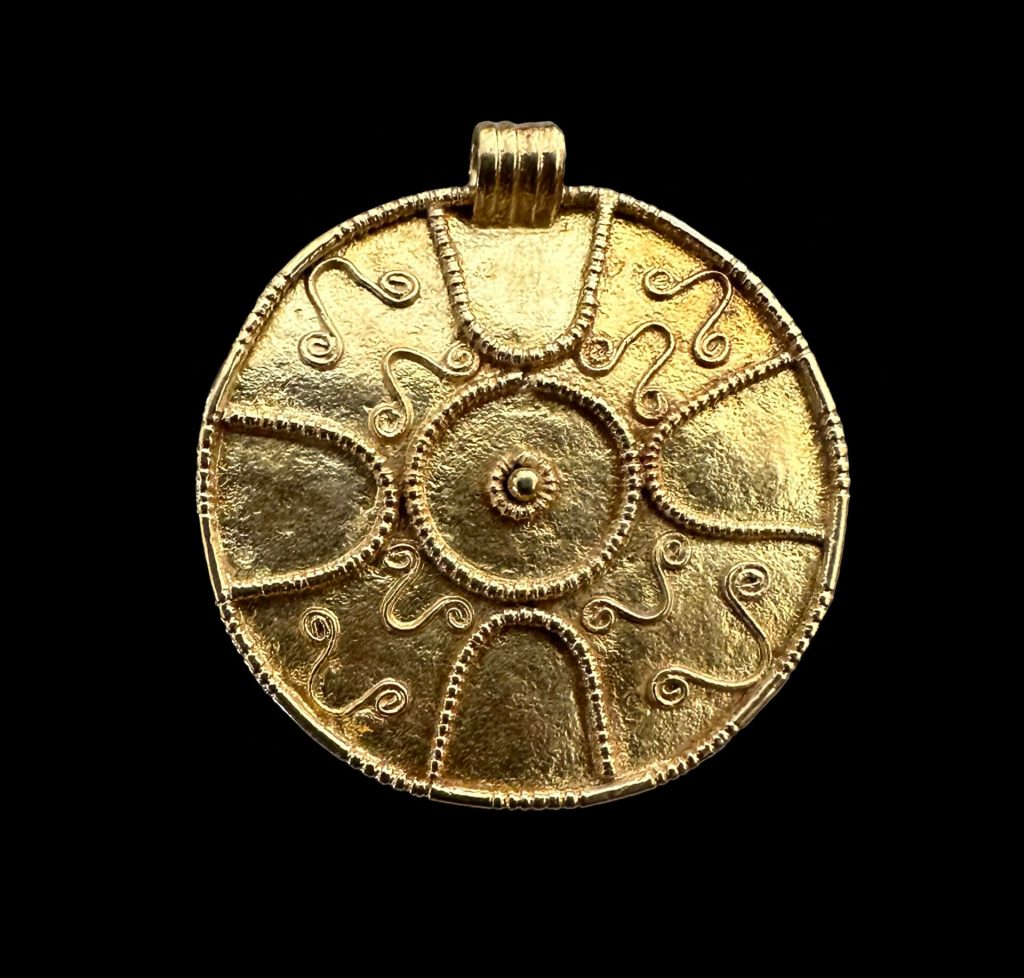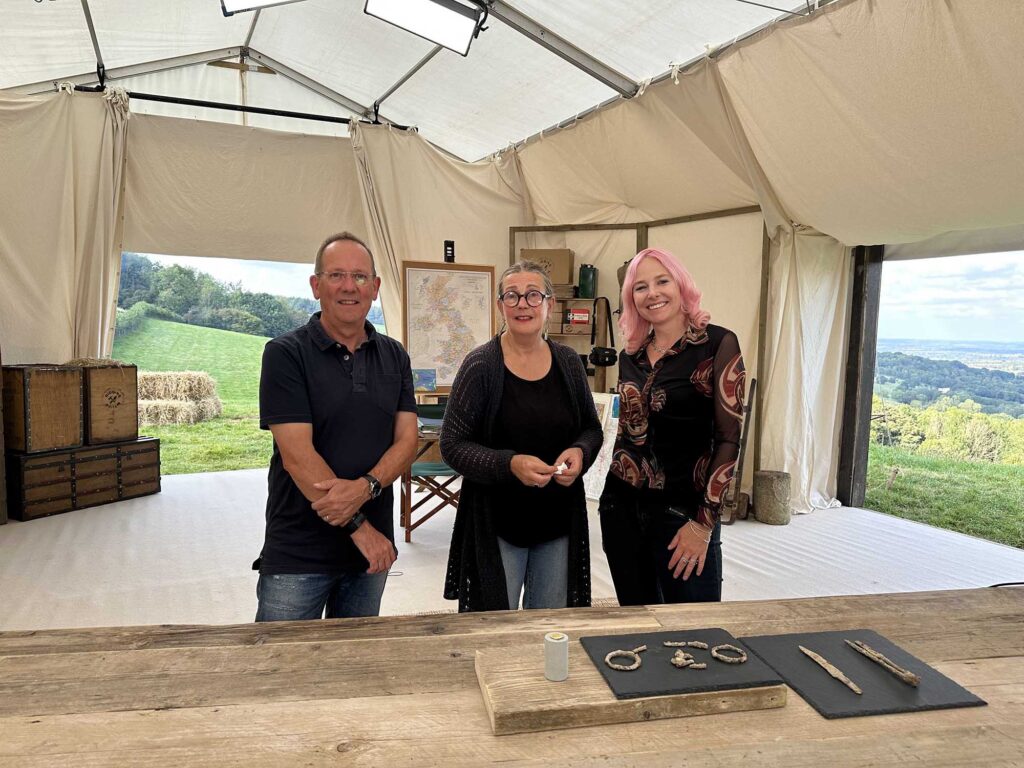Excitement is building as our site on Sun Lane site in New Alresford, Hampshire, takes centre stage in an upcoming episode of ‘Digging For Britain.’ The site has yielded fascinating insights into the past, revealing three Bronze Age ring-ditches which later became the focal point of a large Anglo-Saxon cemetery.



Aerial views of the site.
Our investigation, commissioned by RPS, spans approximately 1 hectare on land earmarked for a Taylor Wimpey housing development. The Bronze Age ring-ditches were initially identified in aerial photographs decades ago. Trial trenching of these features in 2015 revealed the inhumation cemetery, which we now know is Anglo-Saxon, appearing to date to the 7th century AD.
These features have been eroded by ploughing, with some of the graves almost totally destroyed. There was no surviving evidence of a central burial contemporary with the ring-ditches. However, two poorly preserved Bronze Age urned cremation burials have been recovered from within the ring ditches and two crouched inhumations in the vicinity of the ring ditches may be prehistoric. We have excavated over a hundred Anglo Saxon inhumation graves, making this one of the largest cemeteries of that period in the River Itchen valley, where at least eight broadly contemporary cemeteries are known.



Excavation of the Anglo Saxon cemetery.
The Anglo Saxon cemetery appears to have been organised and divided into a number of groups of graves. Rows of graves, predominantly aligned east-west with heads facing west, suggest a carefully planned layout. The majority of burials conform to a standard pattern, supine and unaccompanied, while a few deviate with north-south orientations. Less than half of the graves were accompanied by grave goods, but these included a knife, a seax and a sword.
However, a truly spectacular find steals the spotlight – an intricately designed gold disc pendant, discovered in the poorly preserved grave of a young woman. The pendant, decorated with filigree forming a cruciform pattern, features eight omega scrolls and two central circles around a gold granule.

.
This exquisite gold disc pendant has good parallels with examples known from Anglo Saxon cemeteries at St Mary’s Stadium, Southampton and Worthy Park, near Winchester. It is probably of 7th century date.
This fantastic find holds significance beyond its aesthetic appeal, with its explicitly Christian symbolism. Does this exquisite pendant offer a glimpse into the religious beliefs of the woman with whom it was buried? Other aspects of the cemetery suggest a community in the throes of religious evolution during the 7th century, coinciding with the establishment of an early minster church in nearby Winchester. The organisation of the cemetery, the chosen alignment of the graves with uniform, supine inhumations with no grave goods collectively point towards the possibility of this being an early Christian cemetery.
This episode of ‘Digging For Britain’ is due to be broadcast on BBC 2 at 8pm on Wednesday 3rd of January. Tune in for an enthralling episode to immerse you in Hampshire’s archaeological legacy, as well as adding a spectacular touch of bling to kick off the New Year in style!

PCA regional manager Paul McCulloch and post-Roman finds specialist Märit Gaimster pictured with Alice Roberts during filming.

